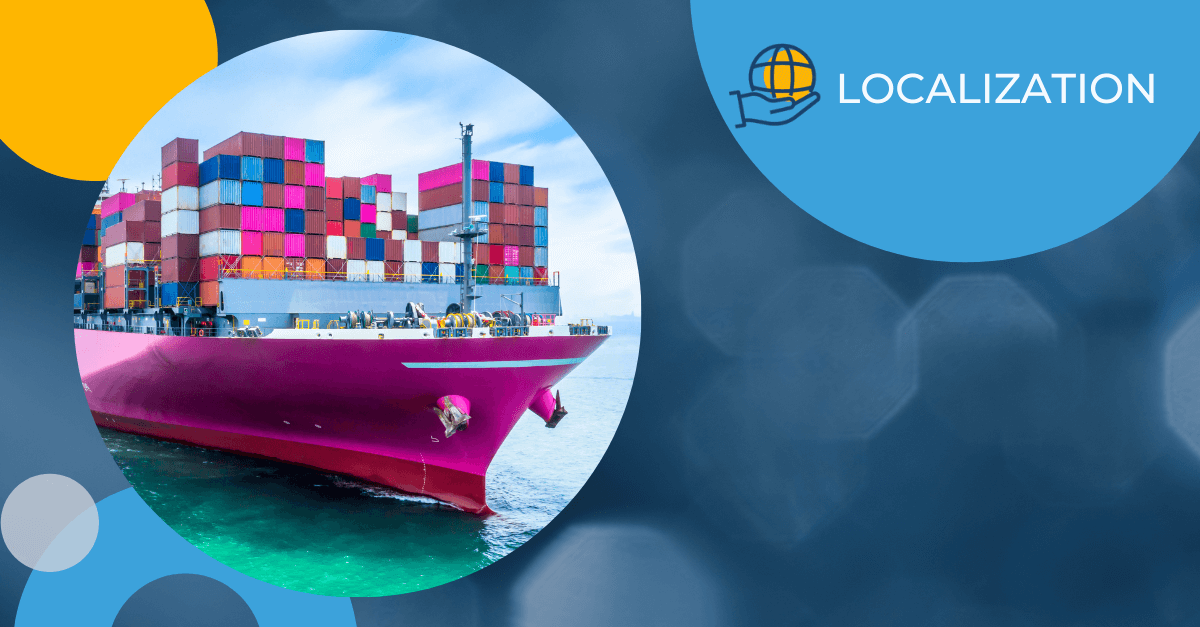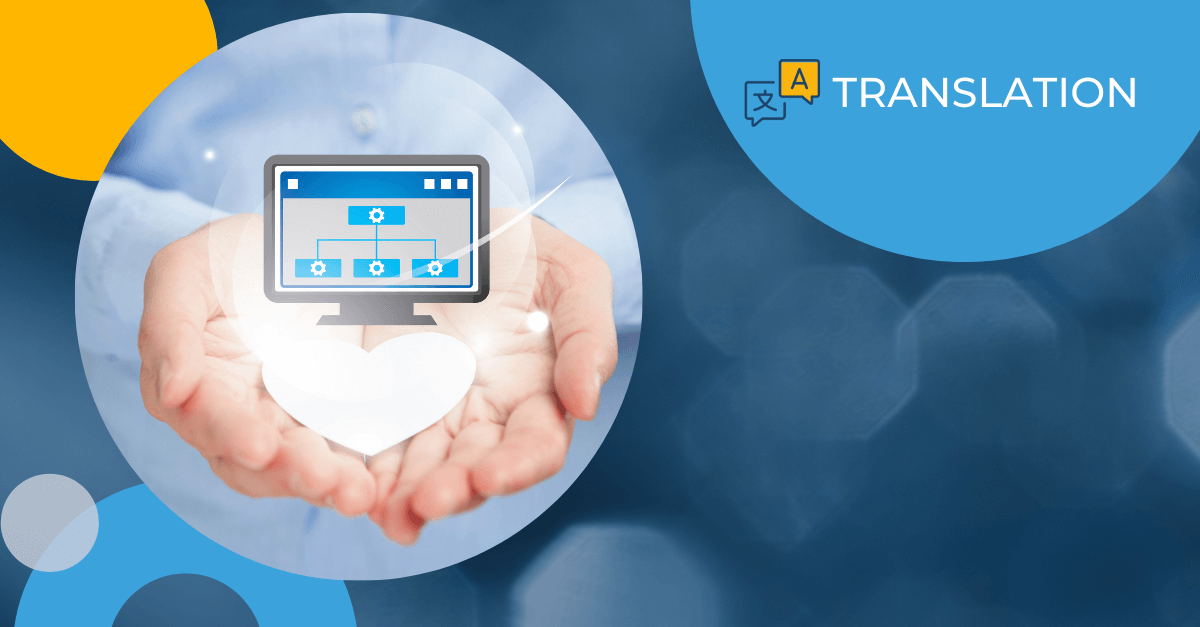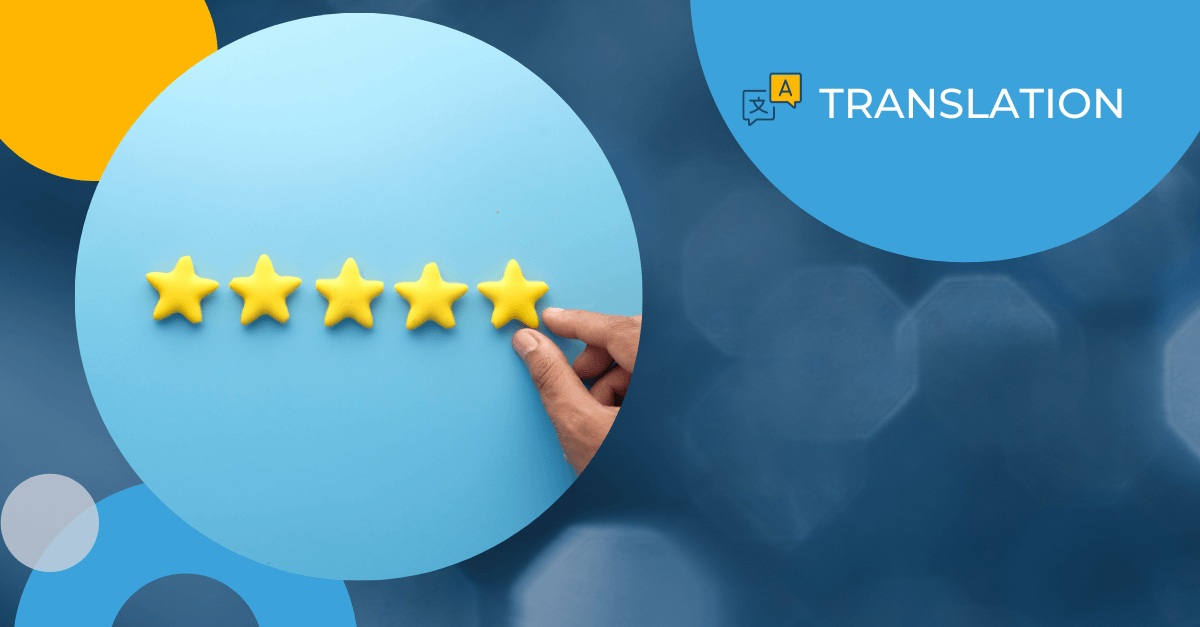Category: Global Marketing
Doing Business Globally and Protecting Your Brand Locally

In today’s digital age, businesses of all sizes have the unprecedented ability to expand globally. However, reaching international markets requires more than just offering products or services; it involves crafting multilingual content that resonates with local audiences.
This dual approach of global reach and local sensitivity, known as “localization,” is essential for building a strong brand presence worldwide.
In this blog we will discuss for companies aiming to increase their market share how to employ effective translation and localization strategies to ensure your messaging is both accurate and culturally relevant.
Understanding Localization: Beyond Simple Translation
Localization involves adapting content not only linguistically but also culturally. It goes beyond translating words to include regional dialects, vernaculars, and grammatical rules. For instance, date formats, currencies, and symbols vary across regions, and culturally appropriate idioms, graphics, or references are crucial. A well-localized campaign can prevent misunderstandings and enhance a brand’s appeal.
Consider a foreign food distributor using the slogan “locally grown flavors and colors.” While this phrase might be appealing in London, it could raise doubts in New York about the authenticity of the distributor’s products. The translation is correct, but the message may fail to convey the intended meaning and credibility without proper localization.
Avoiding Cultural Missteps: Real-World Examples
Mistakes in localization can lead to embarrassing or damaging consequences. A notable example is a hotel chain that used the phrase “thanks for having me” in its global campaign. While this phrase is a polite expression in the US, its literal translation in Russian conveyed inappropriate meanings. The oversight resulted in a significant blunder, highlighting the importance of understanding cultural nuances.
Another case involved a sportswear brand that unintentionally offended a cultural group by using a graphic resembling a religious icon. The brand faced backlash, product recalls, and damage to its reputation. Such incidents underscore the necessity of thorough cultural vetting in global campaigns.
Building Deeper Connections Through Localization
Localization is not just about avoiding mistakes; it also offers an opportunity to connect with consumers on a deeper level. Native-language linguists, familiar with a region’s history, culture, trends, and geography, can tailor messages that resonate more effectively. For example, using local sayings, popular figures, or regional events in marketing materials can create a sense of familiarity and trust with the target audience.
Key Considerations for Effective Localization
To successfully localize content, companies should consider the following:
- Cultural Context: It is crucial to understand the cultural background of the target market, including social norms, values, and taboos.
- Linguistic Accuracy: It is essential to ensure accurate translations that reflect the intended meaning and tone. Misinterpretations can lead to confusion or offense.
- Visual Elements: Images, colors, and symbols should be culturally appropriate and resonate with local audiences.
- Legal and Regulatory Compliance: Different countries have varying advertising, labeling, and consumer protection regulations. Complying with these laws can help avoid legal issues.
- Consistent Brand Voice: While localization requires adaptation, maintaining a consistent brand voice across all markets is vital for brand integrity.
The Role of a Trusted Localization Partner
Partnering with an experienced localization service provider can streamline the process and ensure high-quality outcomes. Such providers bring technical expertise, a deep understanding of local cultures, and established quality assurance processes. They can handle a wide range of file types and deliver seamless integration, reducing time and cost while preserving the integrity of the original message.
The Future of Global Business
As the global marketplace expands, businesses must prioritize localization to reach diverse audiences effectively. By adapting content to meet local expectations and preferences, companies can build stronger connections with consumers, avoid costly mistakes, and enhance their global brand presence. Investing in a trusted localization partner is a strategic move that can provide a competitive edge internationally.
Partnering with a professional localization service, like Morningside, a Questel Company, is crucial for businesses looking to navigate the complexities of global markets. Morningside offers comprehensive translation and localization services tailored to meet the unique needs of each market. Contact us today to learn how we can help you succeed in your global endeavors.
Get the latest insights delivered to your inbox
11 Tips for Getting a Quality Translation

Whether you’re a multinational corporation, a legal firm, or an organization working on international projects, the accuracy and quality of your translations can significantly impact your success.
However, ensuring high-quality translations is not straightforward; it requires careful planning, attention to detail, and a deep understanding of linguistic and cultural nuances.
This blog provides 11 expert tips to guide you through achieving exceptional translations, helping you avoid common pitfalls and ensuring your message resonates with your intended audience, no matter the language.
1. Choose a Service Wisely
Selecting an exemplary translation service is crucial for ensuring quality. When choosing a provider, consider the following:
– Cultural and Linguistic Proficiency: A qualified translator should be fluent in the source and target languages and deeply understand the cultural nuances and context. This knowledge ensures that the translation resonates appropriately with the target audience. Verify the provider’s qualifications, experience, and expertise in the specific domain relevant to your content.
Tip: When selecting a translation service, prioritize those with specialized expertise in your industry. Translators with experience in your field are more likely to understand complex terminology and industry-specific nuances, leading to a more accurate and relevant translation.
2. Start Hiring Early
Initiating the translation process early is essential for a thorough and high-quality outcome.
– Project Planning: Early engagement allows for adequate planning and coordination. It gives translators ample time to familiarize themselves with the content and industry-specific terminology. This preparation helps prevent rushed work, ensuring a more accurate and polished final product.
Tip: Provide your translators with comprehensive background information about the project, including the purpose, target audience, and any specific style guides or glossaries they should follow.
3. Form a Team and Include the Translator
Successful translations often require a collaborative approach.
– Team Collaboration: Include editors, subject matter experts, and proofreaders in your team. This multidisciplinary approach ensures that the translation is accurate and stylistically consistent. Having subject matter experts can be particularly beneficial for specialized content, as they can clarify complex concepts.
Tip: Establish regular check-ins with your translator to discuss progress and address any questions or concerns that arise during the translation process.
4. Designate a Contact Person and Project Manager
Clear communication is vital for a successful translation project.
– Single Point of Contact: Designate one person as the main point of contact for the translation team. This person should be knowledgeable about the content and available to answer any questions. They can streamline communication, reduce misunderstandings, and ensure the project stays on track.
Tip: A dedicated project manager can streamline communication and decision-making, reducing the likelihood of misunderstandings or delays.
5. Define Your Target Audience
Understanding the target audience is critical for tailoring the translation appropriately.
– Audience Profiling: Clearly define who will be reading the translated document. Consider factors such as their language proficiency, cultural background, and the context in which they will read the text. This information helps the translator adjust the tone, style, and terminology to suit the audience’s needs.
Tip: Provide your translator with detailed profiles of the target audience, including any relevant cultural sensitivities or preferences.
6. Be Concise
Clarity and conciseness are crucial in translation.
– Avoid Ambiguity: Clear and concise language minimizes the risk of misinterpretation. Avoid using complex sentences or jargon unless necessary. This approach helps ensure that the message is easily understood by the target audience, regardless of their language proficiency.
Tip: Use plain language and avoid idiomatic expressions that may not translate well into other languages.
7. Allow Adequate Time
Quality translations require sufficient time.
– Realistic Deadlines: Set deadlines for thorough translation, review, and revisions. Consider the time needed for each project phase, including initial translation, proofreading, and final approval.
Tip: Allow extra time for complex projects or those requiring multiple languages, as these will need additional coordination and quality checks.
8. Perfect Your Original Document
A well-prepared source document is critical to a successful translation.
– Clarity and Consistency: Ensure your original document is clear, well-organized, and error-free. This helps the translator produce a more accurate translation. Clear documents reduce Ambiguity and the risk of misinterpretation, leading to a more faithful final product.
Tip: Have a subject matter expert review your original document before translation to catch potential issues.
9. Pay Attention to Creative Language
Creative language can be challenging to translate accurately.
– Idioms and Slogans: Phrases like idioms, slogans, and metaphors may not have direct equivalents in other languages. Consider whether these elements are essential or if they can be adjusted. Creative language requires careful consideration to maintain the intended meaning and emotional impact.
Tip: Work closely with your translator to find culturally appropriate alternatives for creative language that maintain the original message’s impact.
10. Utilize Computer-Aided Translation (CAT) Tools
CAT tools can enhance the efficiency and consistency of translations.
– Terminology Management: CAT tools help maintain consistency in terminology and style across large projects. They store previously translated segments and terminology, making it easier to keep translations consistent.
Tip: While CAT tools are valuable, they should complement rather than replace human translators. Ensure that your provider uses these tools to support, not substitute, human expertise.
11. Use Back Translation
Back translation involves translating the target text back into the source language.
– Quality Check: This method helps identify significant deviations or misunderstandings in the translation. It is a quality assurance step to ensure the translation accurately reflects the original content’s meaning.
Tip: Use back translation as one of several quality assurance steps, alongside proofreading and expert review.
Conclusion
By following these 11 tips, you can significantly improve the quality of your translations. From selecting the right service provider to using advanced tools like CAT and back translation, each step is crucial in ensuring your message is accurately conveyed across languages and cultures. A thoughtful and well-organized approach to translation can save time, reduce costs, and enhance the overall effectiveness of your communication.
Why Consider Morningside?
At Morningside, A Questel Company we pride ourselves on providing high-quality translation services tailored to your needs. Our experienced professionals offer a full suite of services, including pre-translation editing, expert translation, and comprehensive quality assurance. Whether you need a simple document translation or a complex, multilingual project, we are here to help.
Take the first step toward a successful translation project. Discuss your needs and receive a personalized consultation. Let us ensure your message is accurately and effectively communicated in any language.
Get the latest insights delivered to your inbox
What to Consider When Choosing a Translation Service

When venturing into international markets, selecting an exemplary translation service is a crucial decision that can significantly impact your business’s success.
Effective communication across different languages and cultures is essential for maintaining your brand’s integrity and engaging with a global audience. At Morningside, we understand the nuances of comprehensive legal, life science and corporate language solutions and the importance of precision in translation. Our expertise ensures that your message is conveyed accurately, helping you seamlessly achieve your international business objectives.
In this blog we will explore what you should consider when choosing a translation service and cover some helpful tips along the way.
Reputation: Trust and Credibility
The reputation of a translation service is paramount. A provider with a strong reputation offers reliability and trustworthiness, which are crucial factors when investing in professional translation services. Start by researching the company’s background, including its history and longevity in the industry. Look for certifications that signify adherence to high standards, such as ISO certifications for translation services. These credentials demonstrate the company’s commitment to quality and professionalism.
Tip: Explore client testimonials or case studies that the company may have received. Such accolades can further validate their reputation and expertise in the field. Look for reviews that discuss the accuracy of translations, the responsiveness of customer service, and the ability to meet deadlines. Positive feedback from previous clients indicates the service’s reliability and effectiveness. Additionally, consider contacting past clients for direct insights into their experiences.
Experience: Specialized Knowledge and Expertise
Experience is crucial in selecting a translation service, especially if your project involves specialized content. Whether you require translation for legal documents, technical manuals, or marketing materials, choosing a provider with expertise in your field is essential. Experienced translation services understand the relevant terminology and appreciate the nuances and context of your content, ensuring that your message is accurately conveyed.
Tip: Consider the provider’s proficiency with the specific language pairs you require. A deep understanding of source and target languages and their cultural contexts is vital for effective translation. Ensure that the service offers localization to adapt your content to the cultural and contextual nuances of the target market, making it more relatable and engaging for local audiences.
Verify if the translation service employs native speakers for both the source and target languages. Native speakers can offer a more nuanced and culturally accurate translation, enhancing the overall quality of the service.
Communication: Engagement and Support
Effective communication throughout the translation process is essential for a smooth and successful project. Look for providers that offer multiple communication channels, such as dedicated project managers, customer support teams, and client platforms. These channels facilitate prompt responses to your queries and ensure you stay informed about the project’s progress.
Tip: Assess the provider’s communication protocols and responsiveness. A service that offers regular updates and proactively addresses issues will help ensure your project runs smoothly and meets your expectations.
Moreover, evaluate the provider’s willingness to customize their services according to your needs. A flexible approach can accommodate specific requirements, such as adjusting project scope, deadlines, or special formatting needs. Strong communication and support contribute significantly to a positive client experience and the overall success of the translation project.
At Morningside, we pride ourselves on delivering high-quality translation services tailored to your needs. Our commitment to accuracy, cultural relevance, and exceptional customer support ensures that we provide comprehensive solutions that drive your success in the global marketplace. Whether you need translation for legal documents, marketing materials, or technical content, our team of experts is equipped to handle your project with precision and expertise.
Selecting an exemplary translation service involves carefully considering the provider’s reputation, experience, and communication practices. By focusing on these critical factors, you can ensure that your translations are accurate, culturally appropriate, and effectively support your international business efforts.
About Morningside
Morningside, a Questel Company, is a recognized leader in comprehensive language solutions. We provide a full suite of services, including document translation, interpretation, website localization, and multilingual marketing support. We deliver customized solutions based on your needs, utilizing industry-leading technology for accuracy, lower costs, and faster turnaround times.
Ready to elevate your global presence? Contact us today to ask any questions you may have or to get started on your translation project. Our dedicated team is here to provide the support and expertise you need to achieve your international business goals. Let us help you navigate the complexities of global communication with confidence.
Get the latest insights delivered to your inbox
The Power of Localization in Global Marketing

In today’s international, multicultural business landscape, companies must continuously expand their geographical online reach and customer engagement. This process begins with a robust localization strategy—a plan for effective communication across multiple cultures and languages.
This blog explores the importance of localization and how partnering with a Language Service Provider (LSP) can enhance your global marketing efforts.
The Importance of Localization
A target audience who feels a company is speaking directly will respond positively.
However, many marketing teams fail to integrate a localization strategy until after other key marketing plan elements are already in place. Social sharing influences 81% of internet shoppers, so local company reputation is crucial. The stakes are too high to make localization an afterthought; it must be part of the initial strategic planning.
Localization is crucial from the beginning because it ensures that the marketing message resonates with the target audience’s cultural and linguistic nuances. Starting with localization prevents the need for costly and time-consuming revisions later on and helps in building an immediate connection with the local audience. Incorporating localization at the outset enhances brand credibility and customer trust, leading to better engagement and conversion rates.
Tip: When selecting an LSP, prioritize those with expertise in your target markets and industries.
How an LSP Helps Plan Strategy
Early Involvement in Quality Control
Bringing an LSP into the process early ensures that the quality of communication is not compromised when a message is delivered to diverse audiences through different languages.
An LSP can bring several more benefits when involved early, including:
Quality Control: Ensuring the messaging is accurate, culturally appropriate, and maintains brand integrity across languages.
Consistency: Maintaining a consistent tone and style throughout all marketing materials.
Efficiency: Streamlining the localization process, reducing time and costs associated with revisions.
Expertise: Providing insights into local market trends, consumer behavior, and effective communication strategies.
Resource Allocation: Helping to allocate resources effectively by identifying potential challenges and opportunities in different markets early on.
Early involvement allows LSPs to maintain quality control over the message and delivery style before advertising space is purchased or marketing materials are designed.
Effective Local Keywords and Social Hashtags
LSPs can choose effective local keywords and social hashtags by examining how the target population searches for the product or service. They also provide the necessary background for social media, which must be localized to gain traction.
Local keywords and social hashtags differ from general ones in that they reflect the target audience’s specific language, culture, and search behavior. They can significantly impact a campaign’s success by:
Improving Search Engine Rankings: Local keywords enhance the relevance of content for search engines, increasing visibility in local searches.
Boosting Engagement: Social hashtags that resonate with local trends and conversations can increase engagement and interaction on social media platforms.
Enhancing Relevance: Using locally relevant terms makes the content more relatable and appealing to the target audience, leading to higher conversion rates.
Speaking the local language means more than using the correct target language words; it involves utilizing local nomenclature and slang while appropriately addressing local concerns.
Tip: Select a provider with proven expertise, a solid cultural understanding, and robust quality assurance processes. Ensure they offer comprehensive services, utilize advanced technologies, and have positive case studies. This will help ensure high-quality, culturally relevant content for better engagement and results.
Website Content Localization
When planning to localize website content, LSPs provide essential information on desktop publishing and website issues, such as producing text of ideal length and tone. Design elements like colors and images should be considered at the start of the design process to meet cultural expectations and avoid alienating customers from different cultures.
Some Best Practices you should consider:
Cultural Sensitivity: Ensure content respects and reflects local customs, traditions, and values.
Linguistic Accuracy: Use professional translators to maintain accuracy and appropriateness in the target language.
Visual Adaptation: Adapt images, colors, and design elements to suit local preferences.
User Experience: Optimize navigation and user interface for local users, considering factors like reading direction and local internet usage patterns.
Legal Compliance: Ensure content complies with local regulations and standards.
Common Pitfalls you can avoid:
Literal Translation: Avoid word-for-word translations that may not make sense or may be culturally insensitive.
Ignoring Local Preferences: Failing to adapt content to local tastes and preferences can alienate the target audience.
Inconsistent Messaging: Inconsistent tone or style can confuse or deter customers.
Overlooking Local SEO: Neglecting to optimize for local search engines can result in poor visibility.
Lack of Testing: Not testing localized content with local users can lead to undetected issues.
Tip: When selecting an LSP for website localization, it’s crucial to prioritize providers with expertise in digital localization. Look for LSPs with a proven track record in adapting digital content to diverse cultural and linguistic contexts. They should also excel in SEO and content optimization, ensuring your website ranks well in local search engines and resonates with local audiences.
The Primacy of Localization in Internet Marketing
As web-based advertising becomes more sophisticated, effective ad targeting becomes crucial. Targeting local populations with uniquely relevant content increases reach through social media. Incorporating multilingual SEO when translating websites is essential. This includes adding local business names, addresses, phone numbers, and working hours where appropriate.
Website headings (H1) and subheadings (H2) should reflect local preferences. Even the web address (URL) can be tailored to appeal to different populations, pointing back to the original website.
It is important to prominently display sharing buttons with links to local social media accounts on landing pages. Local search engine optimization (SEO) supports these platforms, helping people find the company when seeking its services.
Multilingual Marketing in the Global Workplace
As the internet shrinks the world into a connected network, marketers must deliver materials and messages across borders, cultures, and languages. Companies that fail to do so are disadvantaged compared to those producing materials consumed and spread organically by local populations.
Adding local elements as an afterthought to a product designed for a different market is ineffective and potentially harmful to a global brand. Effective localization starts at the beginning of the marketing strategy, involving the LSP in the inner circle of planning.
Effective localization is essential for expanding online reach and engaging customers across diverse markets. Early involvement of an LSP in the strategic planning process ensures that marketing messages are culturally relevant and impactful.
Contact Morningside for expert localization services that enhance your global marketing efforts. Our team of specialized translators ensures that your messages resonate with target audiences worldwide, driving engagement and success.
About Morningside
Morningside, a Questel Company, is a recognized leader in comprehensive language solutions. We provide a full suite of services, including document translation, interpretation, website localization, and multilingual marketing support. We deliver customized solutions based on your needs, utilizing industry-leading technology for accuracy, lower costs, and faster turnaround times.
For more information, contact us today to learn how we can support your translation needs.
Get the latest insights delivered to your inbox
8 Essential Areas for Professional Business Translation Services

Expanding your brand into foreign markets is exciting, but effective communication is crucial for success. It helps to communicate with that new audience in their own language. However, speaking their language is not limited to verbal or written cues. It also involves cultural nuances, context, and local preferences.
A professional language services provider (LSP) can help you cater your business content to ensure you connect with as many customers as possible worldwide. Below, we will uncover the eight most common areas where professional business translation services are essential, why they matter, and how to choose a reliable provider.
1. Marketing Material
Professional translations and localization of your advertising collateral, taglines, product packaging and multimedia presentations will help promote your products and services worldwide while ensuring that what you mean to say is actually communicated to each distinct audience.
Effective marketing relies on resonating with your audience. Translations must capture the essence of your message while adapting it to cultural nuances. This ensures that slogans, imagery, and brand messages are relevant and engaging to local consumers.
Some countries have specific advertising regulations. For instance, the European Union has directives for advertising, and countries like China have stringent laws about content. Ensure compliance with local advertising standards to avoid penalties and build trust in their language.
2. Website Translation
Allowing customers to do business in their preferred language is a proven way to increase interest in your products and services.
Offering content in the local language increases engagement and builds credibility. Website Localization should also consider cultural factors like colors, imagery, and idiomatic expressions to enhance user experience and SEO performance.
Data protection laws like GDPR in Europe affect how websites collect and manage user data. Ensure that translated privacy policies and terms of service comply with local regulations.
3. Desktop Publishing
Format the different language versions of your website and marketing collateral to look graphically consistent across all applications, making every audience feel like the content they’re looking at was created just for them.
Consistency in design across languages enhances brand perception. Desktop publishing ensures that the layout and visual appeal are maintained in all languages, making the content look professional and tailored for each market.
4. Technical Documents
Translate technical documentation such as product information, software manuals, operating manuals, contracts, and export and import documentation into the languages of the end users to prepare your products for global consumption.
Accurate translations are vital for user safety, regulatory compliance, and operational efficiency. Misunderstandings due to poor translation can lead to legal issues, customer dissatisfaction, and operational failures.
Compliance with local standards for product safety and documentation is mandatory. For example, the EU has specific directives for product labeling and instructions, and the US has its own standards for technical documentation.
5. Legal Documents
Manage legal risk by obtaining 100% accurate translations of patents, court filings, discovery documents, litigation files, merger and acquisition records, and antitrust matters.
Legal translations must be precise and unambiguous to prevent misunderstandings and legal disputes. Accurate translations of legal documents are crucial for protecting intellectual property, managing risks, and ensuring compliance with local laws.
Each jurisdiction has its legal requirements. For example, patent translations must meet the guidelines of the local patent office, and contracts must be translated according to local contract law to be enforceable.
6. Financial Information
Provide product information, financial statements, investor relations communications, annual reports and prospectuses in multiple foreign languages to attract new investors.
Providing financial information in multiple languages helps attract global investors and maintain transparency. Accurate financial translations are essential for compliance, investor confidence, and strategic planning.
Financial reporting standards like IFRS or local GAAP must be adhered to, and documents often need certified translations to be accepted by regulators and investors.
7. Interpretation Services
Ensure complete comprehension in legal, corporate, medical and government settings with qualified and vetted interpreters who can make simultaneous, consecutive interpretations to help you easily communicate in person or over the phone.
Professional interpretation ensures clear communication in high-stakes environments. This is crucial for negotiations, legal proceedings, and medical consultations where accuracy and real-time communication are essential.
Specific legal and medical sectors may require certified interpreters to meet regulatory standards and ensure confidentiality and accuracy.
8. Internal Documents & eLearning
Ensure all your employees, franchisees, and third-party vendors fully understand your company’s policies and procedures, employee handbooks, onboarding materials, interactive eLearning programs, company announcements, and other human resources documents by providing quality translations in the local language of each office.
Effective internal communication promotes compliance, efficiency, and a cohesive corporate culture. Translating internal documents ensures that all employees understand company policies and procedures regardless of location.
Employment laws may require certain documents to be available in the local language, and training materials must comply with local regulations on employee rights and safety.
Choosing a Translation Provider
When selecting a translation provider, consider the following:
- Expertise: Look for providers with experience in your industry and the specific types of documents you need to have translated.
- Quality Assurance: Ensure the provider follows ISO standards for quality management, such as ISO 9001, 13485, and 17100.
- Technology: Using advanced translation tools and technologies can enhance accuracy and efficiency.
- Global Network: A robust network of in-country linguists ensures that translations are culturally relevant and contextually accurate.
- Client Support: Strong client support and project management capabilities are essential for handling complex translation projects efficiently.
Why Morningside?
Morningside, a Questel Company, offers comprehensive translation services across various industries, ensuring your message is accurately conveyed in over 200 languages. We specialize in highly regulated legal, life sciences, corporate compliance, and intellectual property sectors. Our global network of 8,000+ translators, including subject matter experts, is backed by industry-leading technology and certified to the latest ISO standards.
Contact Us Today!
Ready to take your business to the global stage? Contact us for expert translation services that can help you connect with new markets and audiences. Let us help you translate your ideas into success.
Get the latest insights delivered to your inbox
When to Use Interpretation vs. Translation

As global interactions increase, the need for accurate language services becomes paramount. As a leading language solutions provider, we know that people can be uncertain about the difference between — and appropriate use of — interpretation services and translation services. Understanding when to use interpretation versus translation is crucial for effective communication.
Both are forms of conveying meaning from one language into another — and both require highly developed language skills — but they are two very different things. This blog explores the differences between these services and offers insights into choosing the right provider.
Understanding Interpretation and Translation
Interpretation and translation both involve converting meaning from one language to another, but they serve distinct purposes. Interpretation focuses on spoken language, facilitating real-time communication, while translation deals with written text, ensuring precise adaptation of content.
What is Interpretation?
Interpretation is the process of converting spoken language from one language to another in real-time or with a slight delay. It is used in various settings, including conferences, business meetings, medical appointments, and legal proceedings. Interpreters must quickly distill and convey the essential meaning of the original speech, capturing tone, nuance, and intent on the spot.
What is Translation?
Translation involves converting written text from one language to another. Unlike interpretation, translation allows time for careful consideration, consultation with subject matter experts, and the use of resources like dictionaries. Translators focus on accuracy and completeness, adapting every detail of the original text to the target language.
Key Differences Between Interpretation and Translation
Timing
Interpretation occurs immediately as the speaker delivers the message. Interpreters must work in real time, making quick decisions to convey meaning without the opportunity to revise.
Translation, on the other hand, occurs after the original text has been created. Translators have the advantage of time, which allows them to refine and perfect their translations with access to reference materials and expert consultations with subject matter experts.
Accuracy
In interpretation, accuracy means faithfully conveying the core message while often omitting non-essential details to maintain flow and clarity.
In translation, accuracy involves a meticulous rendering of every element of the text, ensuring that the translation captures the full meaning and nuances of the original document.
Fluency
Interpreters need to be fully fluent in both the source and target languages, enabling them to switch seamlessly between languages. They must also understand cultural expressions, metaphors, and slang.
Translators typically work into their native language, ensuring a deep understanding of the target language while having a strong grasp of the source language. This allows them to use reference materials to achieve a precise translation.
Handling Subtleties
Interpreters must navigate verbal nuances such as tone, pitch, and inflection, as well as cultural expressions. They convey these elements to ensure the speaker’s intent is clear.
Translators must recognize idioms, metaphors, and cultural contexts in the original text and adapt them appropriately in the translation to maintain the intended meaning.
Types of interpretation
There are two main modes of interpretation:
Simultaneous interpretation occurs in real time, with the interpreter converting the speaker’s words as they are spoken. This method is used in multilingual conferences, where interpreters might work from booths, listening through headphones and speaking into microphones. The instantaneous nature of simultaneous interpretation makes it essential for meetings, conferences, and legal or medical settings.
Consecutive interpretation occurs when the speaker periodically pauses to allow the interpreter to convey the recent segment of speech before continuing. This method is commonly used in business meetings, legal proceedings, and medical consultations. The interpreter typically stands or sits next to the speaker, taking notes to relay the message accurately.
Both types of interpreters should understand the subject matter at hand. In a hospital context, there are medical interpreters; in a courtroom, there are interpreters who specialize in legal interpretation – all of whom must convey thoughts and concepts clearly and work well under pressure.
Steps in Professional Translation
Professional translation involves a multi-step process that combines human expertise and technology to ensure high-quality results. The process begins with converting the source material into a format compatible with Translation Memory (TM) software. TM software helps maintain accuracy and consistency by retrieving previously translated text that matches the current content.
A human translator then reviews and corrects these matched sections and translates any remaining unmatched content. A second translator then conducts a thorough proofing and editing phase to ensure accuracy and coherence. The final step involves desktop publishing, which restores the document’s original design and layout.
Utilizing Machine Translation
Machine Translation (MT) can provide a basic understanding of a document. MT is often paired with human post-editing for projects requiring higher quality but limited by budgets. This approach effectively balances cost and quality.
Choosing Morningside for Interpretation and Translation
Morningside equips the world’s leading organizations with accurate, high-quality, professional translation services. We specialize in highly regulated industries, including legal, life sciences, corporate compliance, and intellectual property. Our services help your ideas reach new markets and audiences while allowing you to maximize your budget.
Our global network of over 8,000 vetted translators includes subject matter experts (SMEs) in various technical fields and practice areas. Supported by industry-leading technology and a quality management system certified to ISO 9001, 13485, and 17100 standards, we ensure that complex materials are translated into over 200 languages with precision and expertise. We cater to Global 500 companies, international law firms, and regulatory bodies, delivering reliable and accurate language solutions.
Why Choose Morningside?
Choosing Morningside, a Questel company, for your interpretation and translation needs means partnering with a trusted provider that prioritizes quality and accuracy. Our specialized services in highly regulated industries ensure compliance and reliability. With a vast network of professional translators and interpreters, advanced technology, and rigorous quality control processes, Morningside is your ideal partner for effective communication across languages and cultures.
Conclusion
Effective communication across languages is essential in our globalized world. By understanding the differences between interpretation and translation and selecting the right service for your needs, you can ensure your message is conveyed clearly and accurately. Morningside’s expertise in both services, supported by a robust network of professionals and cutting-edge technology, makes us the perfect choice for your language solutions.
Get the latest insights delivered to your inbox
What is a Professional Language Partner, and When Do You Need One?

Understanding a Professional Language Partner
In an increasingly interconnected world, effective communication across languages and cultures is not just advantageous but essential for businesses aiming to thrive globally. A Professional Language Partner (PLP) plays a pivotal role in enabling this seamless communication by offering a spectrum of specialized language services. From translation and localization to interpretation and cultural adaptation, PLPs ensure that businesses can convey their messages accurately and resonate with diverse audiences worldwide.
When Should You Engage a Professional Language Partner?
Recognizing the right time to engage a Professional Language Partner is crucial for businesses operating in international markets or diverse environments. Here are scenarios where a PLP’s expertise is particularly valuable:
- Global Market Expansion: A PLP ensures that your content resonates with local audiences through accurate localization when entering new international markets.
- Regulatory Compliance: Accurate translations are essential for compliance with local regulations in legal, healthcare, and finance industries.
- Multilingual Customer Support: A PLP provides support in multiple languages, enhancing customer satisfaction and loyalty.
- International Events: Professional interpretation services facilitate smooth communication for global conferences and meetings.
- Technical and Specialized Content: Translating complex materials like technical manuals or legal documents requires specialized knowledge to ensure precision.
To fully benefit from these scenarios, it’s important to choose a PLP that meets your specific needs and standards.
Key Factors to Consider When Choosing a Professional Language Partner
Selecting the right PLP is essential for ensuring effective communication and high-quality results. Consider these factors when making your choice:
- Industry Expertise and Specialization: Choose a PLP with experience in your specific industry or content type to ensure accuracy and relevance.
- Quality Assurance Processes: Ensure the PLP adheres to rigorous quality control standards and holds its processes to certification standards such as ISO 9001, 13485, and 17100.
- Advanced Technology Integration: Opt for a PLP that uses technology like Translation Memory (TM), Machine Translation (MT), and Terminology Management to enhance efficiency and consistency.
- Global Translator Network: A broad network of native-speaking translators ensures accurate adaptation for different regions.
- Reputation and Client References: Check reviews, case studies, and testimonials to assess the provider’s reliability and performance.
Understanding these factors will help you make an informed decision, but it’s equally important to understand the distinctions between translation and localization to tailor your approach effectively.
Translation vs. Localization: Key Differences and Applications
The PLP you approach will have technical jargon like translation and localization, but what does that mean? Understanding the difference between translation and localization is crucial for effective international communication:
Translation involves converting text from one language to another, focusing on preserving the original meaning and context. For instance, translating a user manual from English to Spanish ensures that the instructions are comprehensible to Spanish-speaking users.
Translation is ideal for straightforward text conversion, such as legal documents, technical manuals, or scientific articles, where minimal cultural adaptation is required.
Localization goes beyond translation by adapting content to fit the cultural, regulatory, and linguistic norms of the target audience. This can include changing date formats, units of measurement, idiomatic expressions, and cultural references. For example, localizing a marketing campaign for a specific country involves adjusting images, slogans, and product names to align with local preferences.
Localization is essential for content that interacts directly with the target audience’s cultural norms, such as websites, software, marketing materials, and multimedia content.
Knowing whether your needs align more with translation or localization helps determine the right moment to engage a Professional Language Partner for your specific translation services.
Optimal Timing to Approach a Professional Language Partner for Translation
Timing is crucial when engaging a PLP for translation services. Here’s when you should consider reaching out:
- During Project Planning: Early engagement helps plan and integrate translation needs into the project workflow. This approach ensures translation is a core part of the project, not an afterthought.
- At Product Development: When developing new products for global markets, incorporating translation from the start aligns product features with local requirements and regulations.
- Pre-Launch Phase: Before launching a product or service in a new market, having translated and localized content ready is critical for a successful introduction.
- For Regulatory Filings: In industries like pharmaceuticals, legal, and finance, translation is often required for regulatory submissions and compliance documents.
By strategically timing your engagement with a professional language partner, you can ensure a smoother process and better results. To maximize these benefits, consider partnering with a trusted provider like Morningside.
Partner with Morningside for Your Language Solutions
Effective global communication demands more than just translation—it requires expertise, precision, and cultural sensitivity. As you navigate the complexities of international markets, partnering with a reliable PLP is essential.
Morningside, a Questel Company, equips the world’s leading organizations with accurate, high-quality, professional translation services. We specialize in highly regulated industries, including legal, life sciences, corporate compliance, and IP. We help your ideas reach new markets and audiences while allowing you to do more with your budget. Our global network of 8,000+ vetted translators includes subject matter experts (SMEs) in various technical fields and practice areas. Morningside is supported by industry-leading technology and a quality management system certified to the latest ISO 9001, 13485, and 17100 standards. We translate complex materials into 200+ languages for Global 500 companies, international law firms, and regulatory bodies.
Ready to expand your reach? Contact Morningside today to discover how we can support your global communication needs.
Get the latest insights delivered to your inbox
5 Essential Strategies to Streamline your Translation Process

In today’s globalized market, the accuracy and quality of your translations can make or break your brand’s reputation. Whether expanding into a new territory or refining your messaging for diverse audiences, precision in document translation is not merely a box to check but a critical component of your market strategy. A flawless translation ensures that your message resonates, maintains the professionalism of your brand, and paves the way for successful international expansion.
We understand the complexities you face as you prepare to enter new markets. That’s why we’ve compiled essential strategies to streamline your translation process and avoid common pitfalls. Implementing these steps will enhance the quality of your translations, reduce costs, and expedite your market entry.
Here are five steps you can take to ensure your translation process runs smoothly.
1. Provide Enough Time
Time is everything, and whether you are tackling document translation, patent translation, medical translation, or website localization, you must give yourself enough time to perfect it. You want to ensure that the translator or translation company has enough time to thoroughly research the subject matter, prepare the translation, and revise and proofread until the final draft is perfect.
Collaboration is key. The more time you have with your translator, the more likely you’ll be on the same page. Effective teamwork and communication are key to localization and translation success.
Tip: If you know that you will need a translation and you want to contact a professional translation company, speak with them as early as possible so that they can build a custom workflow for your project and find the ideal translator.
2. Create a Translation Glossary and Style Guide
A translation glossary and style guide are helpful cheat sheets for linguists to understand your company better. A translation glossary includes the company’s “lingo,” which should stay consistent throughout, and words that should not be translated, such as product names. A style guide describes how a company should be presented visually and textually, as well as the overall style and tone. In short, it identifies those branding elements that must remain, no matter the locale. A translation glossary and style guide for linguists can help ensure consistency. Without this, words and phrases can be translated in multiple ways across different languages, meaning more time is spent revising translations to create consistency. A glossary and style guide can help with consistency reduce the time it takes to complete each document translation, and cut costs.
3. Don’t Use Multiple Linguists
You might think that using many linguists for large projects will speed up the process, but it could have a negative impact on the overall quality and cohesion of the project. Why is that? The more linguists involved, the more prone you’ll be to inconsistencies in the translation. Beyond each linguist’s style and tone, many words have multiple translations that could fit in a given language, and consistency is critical when delivering a message and building a brand. This is especially true if you want to keep with a specific and notable brand image or content style used in the past. The same also applies to your proofreader – give one person enough time instead of forcing the issue with multiple people.
4. Provide All of the Details
The more information you can provide to your translator or translation company, the better. Including more details in the translation also allows the service to choose a translator with expertise in that field more accurately.
When you approach your LSP, you should consider providing your project’s scope, purpose and audience, context and any reference materials, quality expectations, and project timeline.
Providing these details helps the translation provider understand your needs thoroughly and deliver a translation that meets your specific requirements. This comprehensive briefing ensures quality and fosters a more collaborative and efficient translation process.
5. Use Translation Memory Tools
Translation memory tools can store segments, such as sentences, titles, headings, and phrases and create a database for future projects. This helps save time and money for project updates or new content translations. It enforces consistency throughout all project versions and cuts time because the linguists don’t have to spend time re-translating the same thing repeatedly. Morningside works with expert providers, which has helped tremendously reduce client costs.
A high-quality translation is critical to bringing your product or service to a new market, and a poorly executed translation can cost you business. By following the above tips, you can improve the quality of your translation, lower costs, and make your entry into new markets more accessible.
Navigating the intricacies of translation is crucial for any business aspiring to thrive in global markets. As illustrated by our outlined strategies, a meticulous approach to document translation can substantially enhance your brand’s international appeal, ensuring consistency, accuracy, and resonance with diverse audiences. It’s not just about converting words from one language to another; it’s about maintaining the essence and professionalism of your brand in every market you enter.
At Morningside, we specialize in transforming complex translation challenges into streamlined solutions tailored to your needs. Our commitment to quality and innovation helps you overcome linguistic barriers and expedite your market entry—partner with us to safeguard your brand’s integrity across languages and cultures. Contact us today to elevate your translation strategy and expand into new global territories.
About Morningside
Morningside, a Questel Company, equips leading organizations with a full suite of end-to-end language solutions. With over 4,000 clients in 55 countries, Morningside is globally recognized for its subject matter expertise and technology innovation in regulated markets such as legal services, life sciences, corporate compliance, and IP services. Our translation, localization and interpretation expertise equips leading global organizations with the tools to operate seamlessly in foreign markets, overcome regulatory hurdles and connect with audiences worldwide. Global 500 companies, international law firms, and regulatory bodies rely on us as a trusted partner to make intelligent choices for their most valuable assets.
Get the latest insights delivered to your inbox
Common Pitfalls and Solutions for DTP Localization

Localization is a critical process ensuring that a product or service meets its target audience’s cultural and linguistic needs. In the context of Desktop Publishing (DTP), localization is crucial to ensure that a document’s design and layout are appropriate for the target audience’s language and culture. However, there are common pitfalls in DTP localization, such as not leaving enough space for longer translations, not considering cultural differences in design preferences, and not testing the final product with a native speaker or cultural expert.
To avoid these pitfalls, working with a professional localization team that understands the cultural and linguistic nuances of the target audience and has experience in DTP localization is essential. This team should use software that supports multiple languages and test the final product with a native speaker or cultural expert to ensure that the message is clear and compelling and that the design and layout are appropriate. This blog will explore the common pitfalls and solutions regarding localization to help you create professional and culturally relevant documents.
Localization involves adapting a product or service to meet a specific target audience’s cultural and linguistic needs. DTP localization includes modifying the text, images, colors, and other visual elements to ensure they are culturally appropriate and effectively communicate the intended message. Here are some common questions that arise when working with DTP for localization and solutions:
1. Why is localization essential for DTP?
Localization is necessary for DTP because it ensures that the design and layout of a document are appropriate for the target audience’s language and culture. A poorly designed and laid-out document can make it difficult for the target audience to understand and appreciate the message. This could sometimes result in a negative perception of the brand or product.
2. What are some common pitfalls of DTP localization?
Some common pitfalls of DTP localization include not leaving enough space for longer translations, not considering cultural differences in design preferences, and not testing the final product with a native speaker or cultural expert. Additionally, not using software that supports multiple languages or not working with a professional localization team can lead to errors and inconsistencies in the final product.
3. How can these pitfalls be avoided?
These pitfalls can be avoided by working with a professional localization team that understands the cultural and linguistic nuances of the target audience. The team should have experience in DTP localization and be familiar with the software and tools needed to create professional and culturally appropriate documents. It’s also essential to test the final product with a native speaker or cultural expert to ensure the message is clear and compelling.
4. Leave enough space for longer translations
One common issue with DTP localization is needing to leave more space for longer translations, which can result in a visually unappealing document. To avoid this, it’s essential to work with a localization team that can anticipate the space needed for different translations and can adjust the design and layout accordingly.
5. Take cultural differences in design preferences into account
Cultural differences in design preferences can also be a pitfall in DTP localization. For example, different cultures have different color preferences or prefer using different fonts for various purposes. To avoid this, it’s essential to work with a localization team that is familiar with the target audience’s cultural preferences and can adapt the design and layout accordingly.
6. Test the final product with a native speaker or cultural expert
Testing the final product with a native speaker or cultural expert is essential in DTP localization. This can help ensure that the message is clear and compelling and that the design and layout are appropriate for the target audience. It’s essential to work with a localization team that has access to native speakers and cultural experts who can provide valuable feedback on the final product.
7. Use software that supports multiple languages
Using software that supports multiple languages is also essential in DTP localization. This can help ensure that the translation and localization process is seamless and that the final product is professional and visually appealing. Working with a localization team that is familiar with the software and tools needed to create high-quality localized documents is essential.
Localization is essential to releasing multilingual DTP content, helping ensure the final design succeeds with all target audiences. By working with a professional localization team that understands the cultural and linguistic nuances of the target audience, leaving enough space for longer translations, taking cultural differences in design preferences into account, testing the final product with a native speaker or cultural expert, and using software that supports multiple languages, these pitfalls can be avoided.
Ultimately, DTP localization is a complex process that requires attention to detail and expertise to create high-quality localized documents that effectively communicate a message to a global target audience. To ensure you have all the help you need regarding DTP, be on the lookout for our upcoming guide covering Desktop Publishing for Translation Best Practices. If you have any immediate questions or needs, don’t hesitate to contact us.
About Us
Morningside, a Questel Company, is a recognized leader in eLearning translation, providing a full range of language and multimedia services to help you deliver instruction and content to employees, end users, and customers around the globe. Whether your focus is educating and orienting a global workforce or giving on-demand research and collaboration, Morningside has the expert knowledge and proven experience to help you make the most of your global learning and training programs. We provide fast turnaround times, unparalleled accuracy and 24-hour customer support, with a proven track record of delivering projects on time and within budget.
Get the latest insights delivered to your inbox
Translation Quality Standards – What Are They?

When beginning the process of partnering with a professional language services provider (LSP), you will hear a lot about the quality of translations provided – at least, you should. This leads to the question of what are translation quality standards.
According to the International Organization for Standardization (ISO), quality can be defined as “the totality of features and characteristics of a product or service that bears its ability to satisfy stated or implied needs.” In the case of translation, quality can be defined as the success of the translation in accurately capturing and conveying the information and intent of the source document.
Translation quality becomes mission-critical in domains such as medical, legal, accounting, technical documentation, and intellectual property (IP). Poor-quality translations could cause a loss of business value and, in some cases, even a loss of life.
What is an ISO Standard?
ISO standards set out various business processes and best practices internationally agreed upon by experts. ISO standards for translation quality focus on establishing and maintaining a process of translation, review and approval that, when followed diligently by qualified professionals, will consistently result in reliable, accurate translations and meet the requirements of the customer’s use case.
Two Examples of ISO Quality Standards
ISO 9001:2015 is the world’s most widely recognized quality management standard. ISO 9001 outlines ways to achieve consistent performance and service at all levels. Achieving this certification means a company has created a quality system with a framework for better customer satisfaction, staff motivation and continuous improvement.
ISO 17100:2015 is an international quality standard set precisely for the translation industry. It defines the requirements for the core processes, resources and other aspects necessary for delivering a quality translation service. Certification to ISO 17100 showcases a translation company’s high level of commitment to meeting client and industry requirements.
Industry-Specific Translation Quality Standards: A Medical Example
Some industries have specific translation quality needs that more generalized quality standards cannot meet. A good example is ISO 13485:2016, which specifies requirements for a quality management system. This standard requires an organization to demonstrate its ability to provide medical devices and related services, such as translation, that consistently meet customer and applicable regulatory requirements to remain compliant.
ISO 13485 can also be used by suppliers or external parties that provide products or services to such organizations. LSPs, like Morningside, certified to ISO 13485, collaborate with medical device companies to determine risk management for all medical device translations. With the LSP implementing processes that reduce the potential for product risks, the medical device company reduces its exposure to compliance and legal issues, not to mention the risk to customers.
International Standard for Security Management
ISO 27001:2013 is an extensive framework of requirements for “establishing, implementing, maintaining and continually improving an information security management system.” It ensures that business information is handled confidentially and securely and that appropriate care is taken to mitigate risks compromising client data integrity.
Morningside is the world’s first significant patent translation and filing company to obtain this certification. We are one of only a handful of LSPs to have achieved it. Achieving this prestigious certification is no small feat and demonstrates a complete commitment to client data, systems, and processes.
It’s all about the people and the process
Translation quality standards play an essential role, but they are no substitute for providing ongoing training and feedback to translators, as well as arming translators and editors with the necessary resources and information on the subject matter, the context in which the translation will be used, etc. Translation teams equipped with glossaries, style guides, support materials, and contextual information can produce a much higher quality translation than those just handed a text with no background.
About Morningside, A Questel Company
Morningside, a Questel Company equips the world’s leading organizations with accurate, high-quality, professional translation services. We specialize in highly regulated industries, including legal, life sciences, corporate compliance and IP. We help your ideas reach new markets and audiences while allowing you to do more with your budget. Our global network of 8,000+ vetted translators includes subject matter experts (SMEs) in various technical fields and practice areas. Morningside is supported by industry-leading technology and a quality management system certified to the latest ISO 9001, 13485 and 17100 standards. We translate complex materials into 200+ languages for Global 500 companies, international law firms, and regulatory bodies.




